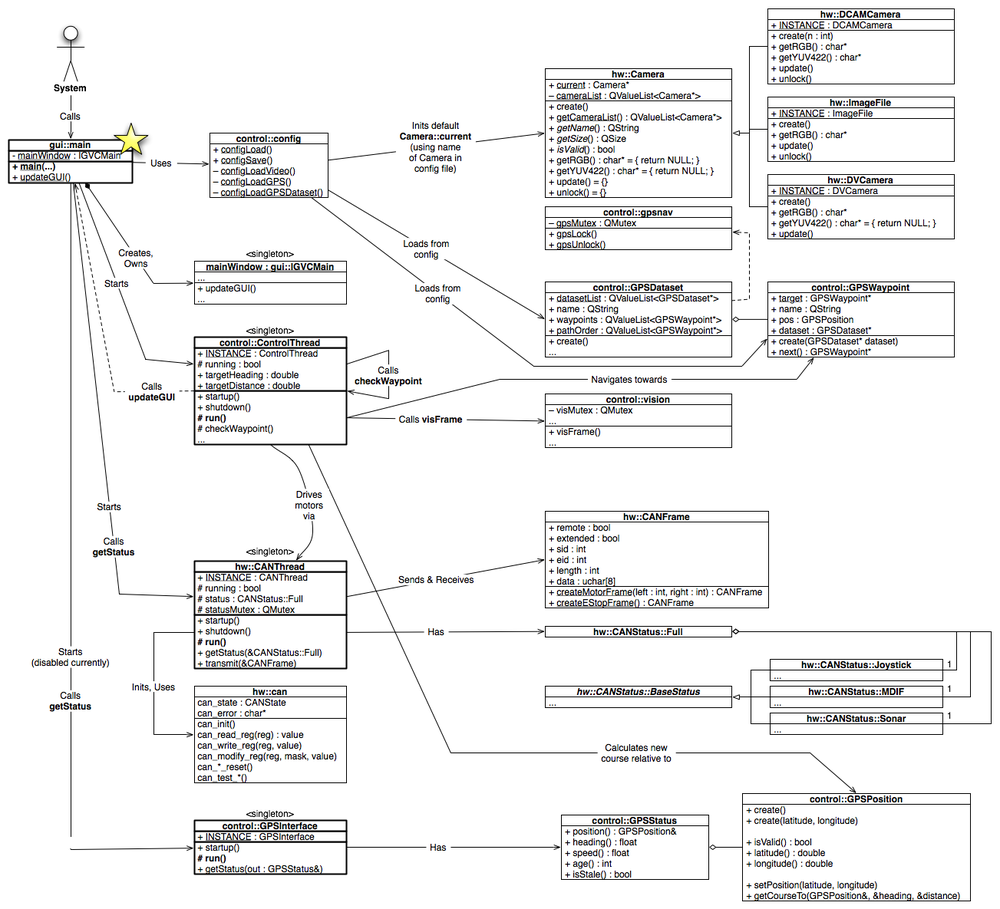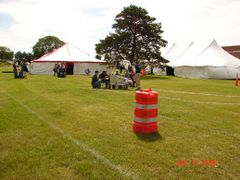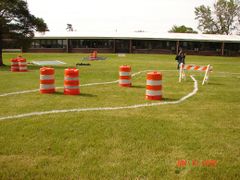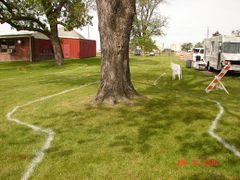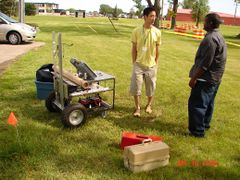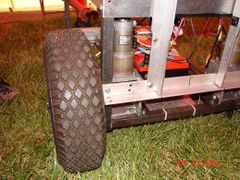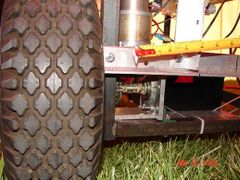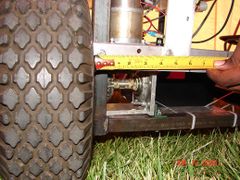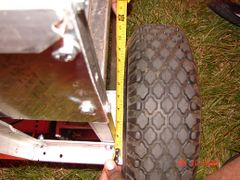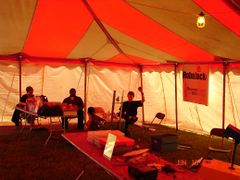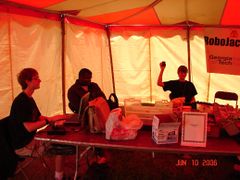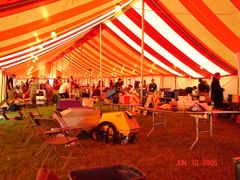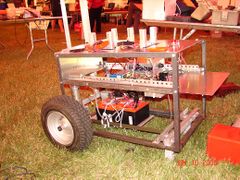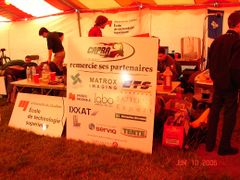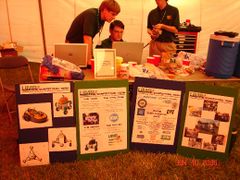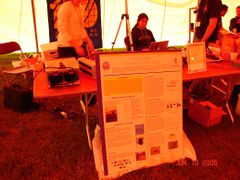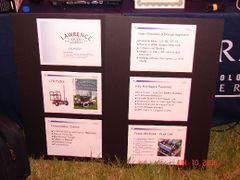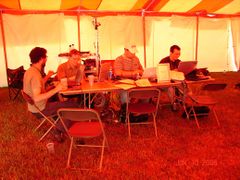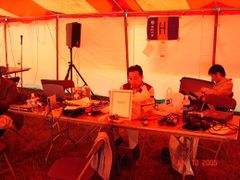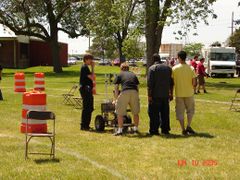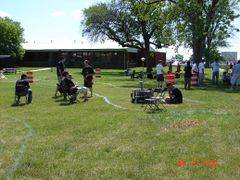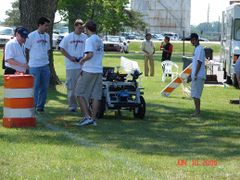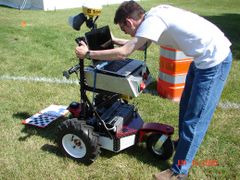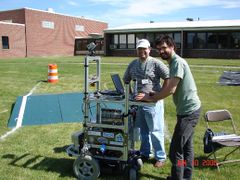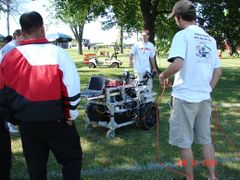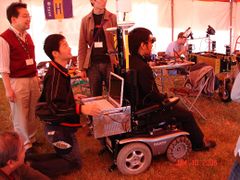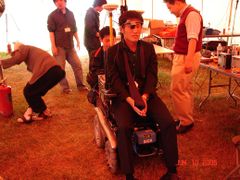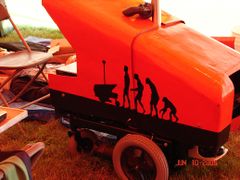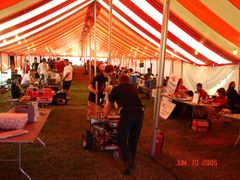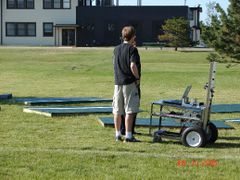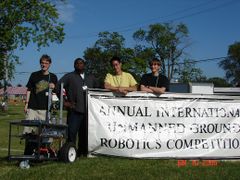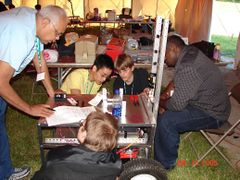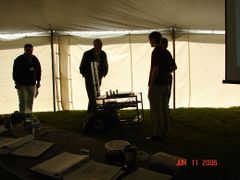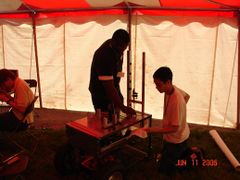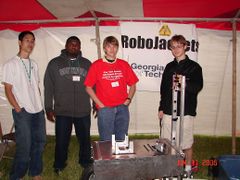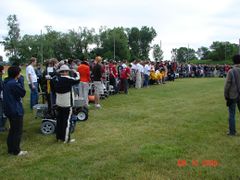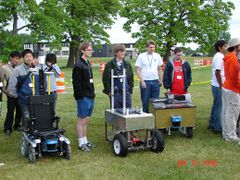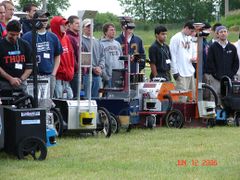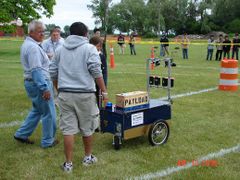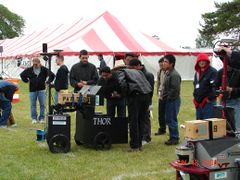Trixxie
| Trixxie | |
|---|---|
| Year Of Creation | 2005-2006 |
| Versions | |
| Current Version | deprecated |
| Update Year | n/a |
| Information and Statistics | |
| Farthest Distance | 0 feet |
| Fastest Time | n/a |
| Highest Placement AutoNav | 28th |
| Highest Placement Design | 13th |
Contents
Competitions
IGVC 2006
- Results
- Distance: 0 feet
- Design Competition Placement: 13th in design group (454 / 800 points)
- AutoNav Competition Placement: 28th (last)
Versions
Trixxie
At Competition
Mechanical Issues & Improvements
Trixxie is a basic cube-shaped robot with two motors mounted on the front. The base has three layers in ascending order: a level for holding Trixxie's heavy batteries, a mid level for holding electronics and the laptop, and a top level on which a payload may sit.
Electrical Issues & Improvements
The electronic hardware of the IGVC robot is built around a central laptop. The laptop provides a central processing unit for all data aquired from the modules.
View a schematic diagram of the modules, power distribution, and code.
Laptop Hardware Specs
Internal Access:
- Processor
- Intel Pentium 4 CPU 2.40GHz
- Physical Memory
- 512 MB RAM
- IDE Master
- 30GB ATA-5 4200RPM HD
- File system partition = dev/hda2 18GB
External Access:
The inputs and outputs of the laptop are described by which physical side of the laptop on which they occur.
- Rear
- DC-in Jack
- Parallel Port
- External Display Port (AGP)
- Video Out Port (S-Video)
- Serial Port
- Two USB Ports - Each supports USB 1.0 and 2.0
- Modem Jack
- Network Jack
- PS/2 Port
- Left
- Security Keylock
- Firewire Port (IEEE 1394)
- Audio Line-in Jack
- Audio Line-out Jack
- Volume Control Knob
- 3.5 Inch Floppy Drive
- Right
- PC Card Slot - Accepts one Type III PC card or two Type I/II PC cards
- Front
- IDE Slave
- DVD/CDRW-
Laptop Software
Under Construction - To add a how-to for using the GUI, descriptions of the files, and additional software development tools.
OS: The IGVC laptop is running Debian Linux kernel v.2.6.8.1. The KDE v.3.3 desktop environment is also running on the machine.
GUI: To activate the GUI, open a UNIX terminal, navitage to laptop_svn, and type ./IGVC.
Software Development:
- Laptop Code
- QT Designer
How-Tos:
Laptop Hardware Specifications
Internal Access
- Processor
- Intel Pentium 4 CPU 2.40GHz
- Physical Memory
- 512 MB RAM
- IDE Master
- 30GB ATA-5 4200RPM HD
- File system partition = dev/hda2 18GB
External Access
The inputs and outputs of the laptop are described by which physical side of the laptop on which they occur.
Rear
- DC-in Jack
- Parallel Port
- External Display Port (AGP)
- Video Out Port (S-Video)
- Serial Port
- Two USB Ports - Each supports USB 1.0 and 2.0
- Modem Jack
- Network Jack
- PS/2 Port
Left
- Security Keylock
- Firewire Port (IEEE 1394)
- Audio Line-in Jack
- Audio Line-out Jack
- Volume Control Knob
- 3.5 Inch Floppy Drive
Right
- PC Card Slot - Accepts one Type III PC card or two Type I/II PC cards
Front
- IDE Slave
- DVD/CDRW-
Laptop Software
Under Construction - To add a how-to for using the GUI, descriptions of the files, and additional software development tools.
OS
The IGVC laptop is running Debian Linux kernel v.2.6.8.1. The KDE v.3.3 desktop environment is also running on the machine.
GUI
To activate the GUI, open a UNIX terminal, navitage to laptop_svn, and type ./IGVC.
Software Development
- Laptop Code - also see the Software page
- QT Designer
How-to
Software Issues & Improvements
Most of the code this year was written by Ben, David, or Spencer. Much of this code was also inherited from the 2004-2005 year. There are notes on that code here: File:Notes on Ben's Code.pdf.
The code is stored in an SVN repository:
URL: svn://130.207.76.145/igvc
Username/Password: Talk to David, Spencer, or Michael to get one.
The following image sequences were taken on 10/08/2005 as test footage for creating vision algorithms.
- IGVCclip1.zip - IGVCclip1movie.mov
- IGVCclip2.zip - IGVCclip2movie.mov
- IGVCclip3.zip - IGVCclip3movie.mov
- IGVCclip4.zip - IGVCclip4movie.mov
- IGVCclip5.zip - IGVCclip5movie.mov
- IGVCclip6.zip - IGVCclip6movie.mov
Animations were assembled and uploaded by David, using the ConcatenateMovieSegments program.
